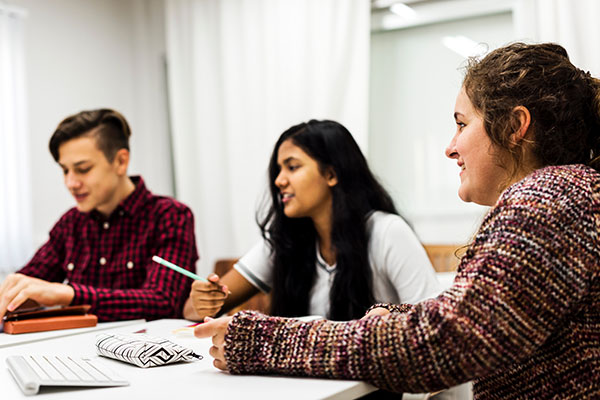 Corning Union High School District (CUHSD), in partnership with Shasta College and Corning Promise, is closing the achievement gap by offering a jump-start to an advanced education by giving students the opportunity to complete postsecondary coursework while in high school. Dual enrollment gives students the opportunity to earn college credit, while at the same time apply credits earned to meet high school graduation requirements, and exposes students to the academic rigor of college-level coursework.
Corning Union High School District (CUHSD), in partnership with Shasta College and Corning Promise, is closing the achievement gap by offering a jump-start to an advanced education by giving students the opportunity to complete postsecondary coursework while in high school. Dual enrollment gives students the opportunity to earn college credit, while at the same time apply credits earned to meet high school graduation requirements, and exposes students to the academic rigor of college-level coursework.
To promote better academic outcomes, CUHSD employs a highly qualified, certificated high school teachers to monitor students enrolled in the college-level classes. Jared Caylor, Superintendent of CUHSD describes the supportive design of the program as “basically it’s a built-in study group for our students.” Creating conditions for success has allowed 400+ students to successfully pass a college course in the last two years since implementation.
Introduction of college-level coursework starts early with the entire freshmen class enrolling in a high school class that embeds college readiness in the curriculum, allowing students to receive one college credit by the end of their freshman year. Juniors and seniors can also elect to take a dual enrollment class, based on their qualification. Offered on campus, at Corning High School, these courses allow the student to get use to the academic expectation of college before leaving their supportive environment.
There are numerous benefits to dual enrollment. A number of studies have found that students who participated in dual enrollment were more likely, compared to similar peers without dual enrollment introduction, to graduate from high school, enroll in four-year colleges and persist in postsecondary education. And, for CUHSD students, their taste of college comes without a fee, with all costs covered by the Paskenta Band of Nomlaki Indians, through Corning Promise. Whether coming from backgrounds of advantage or disadvantage these courses give all students a new sense of confidence, Caylor comments, “By taking these courses, they prove to themselves that they can do the work.”
Caylor promises, “even after initial grant funding is gone, we will see the legacy of the Everett Freeman Promise Neighborhood grant continue.” His goal is to work closely with the neighboring community colleges to offer pathways that lead to completion of technical and trade programs.